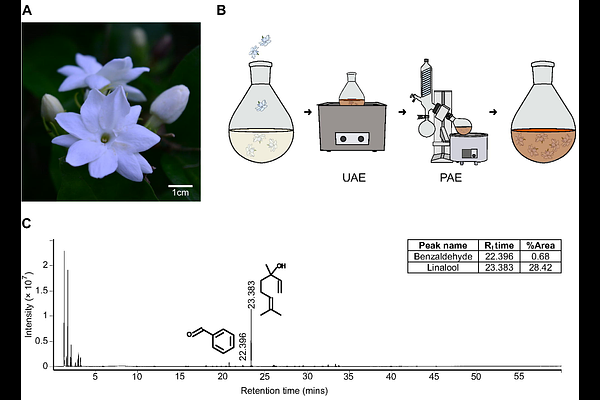The effects of Arabian jasmine on zebrafish behavior depends on strain, sex, and personality

The effects of Arabian jasmine on zebrafish behavior depends on strain, sex, and personality
Atiratana, T.; Goldson, A. R.; Samosorn, S.; Rajput, N.; Praphairaksit, N.; Kenney, J. W.
AbstractJasminum sambac (L.) Aiton, commonly known as Arabian jasmine, is widely used in Thai traditional medicine for mental health ailments. While most studies in humans and animals find that Arabian jasmine reduces stress and anxiety, there are a handful of reports that it can oppose relaxation by increasing autonomic arousal. Using adult zebrafish, we sought to determine whether factors like strain, sex, and personality might contribute to the variable effects of J. sambac on anxiety-related behavior. The flowers of J. sambac were extracted by ultrasonic-assisted extraction with optimal air pressure. Headspace solid-phase microextraction with gas chromatography-mass spectrometry (HS-SPME-GC-MS) identified the main components in the Arabian jasmine flower extract, including linalool (an anxiolytic compound) and benzaldehyde. We fed three strains of zebrafish (AB, TL, and WIK) a gelatin pellet containing different concentrations of J. sambac (5-20 mg kg-1) and assessed 3-dimensional swim behavior in the novel tank and mirror biting tests. We found that in female AB fish, J. sambac resulted in a decrease in bottom distance during the novel tank test, consistent with an anxiogenic effect; there was no effect in WIK or TL fish. We also found that behavioral/personality type influenced the effects of J. sambac where shy AB females increased their percent explored, consistent with an anxiolytic effect. Thus, we find that sex, genetics, and personality interact to influence the anxiety-related effects of Arabian jasmine suggesting that these factors may contribute to the opposing effects of Arabian jasmine reported in the literature.